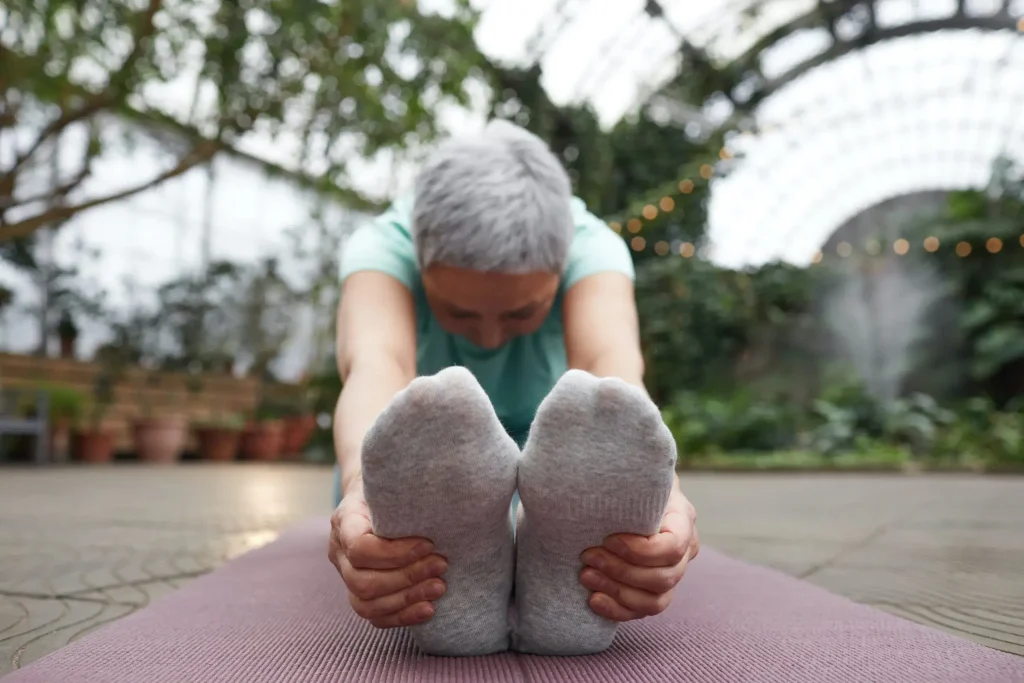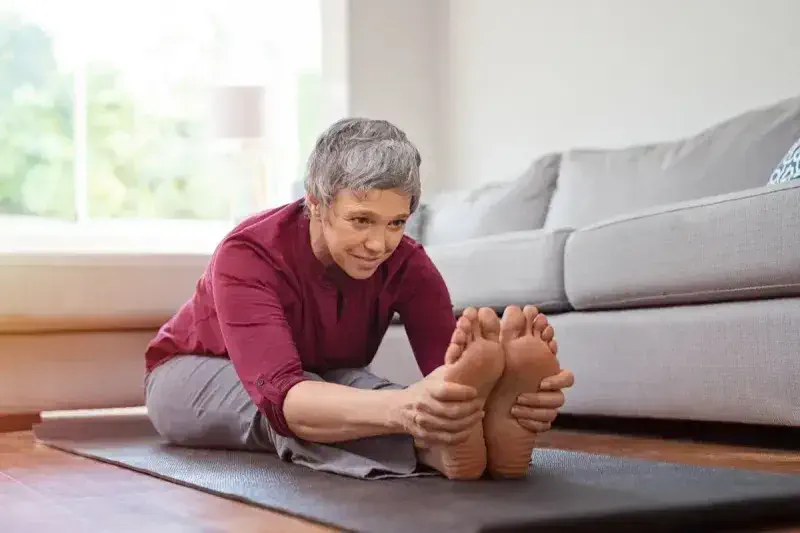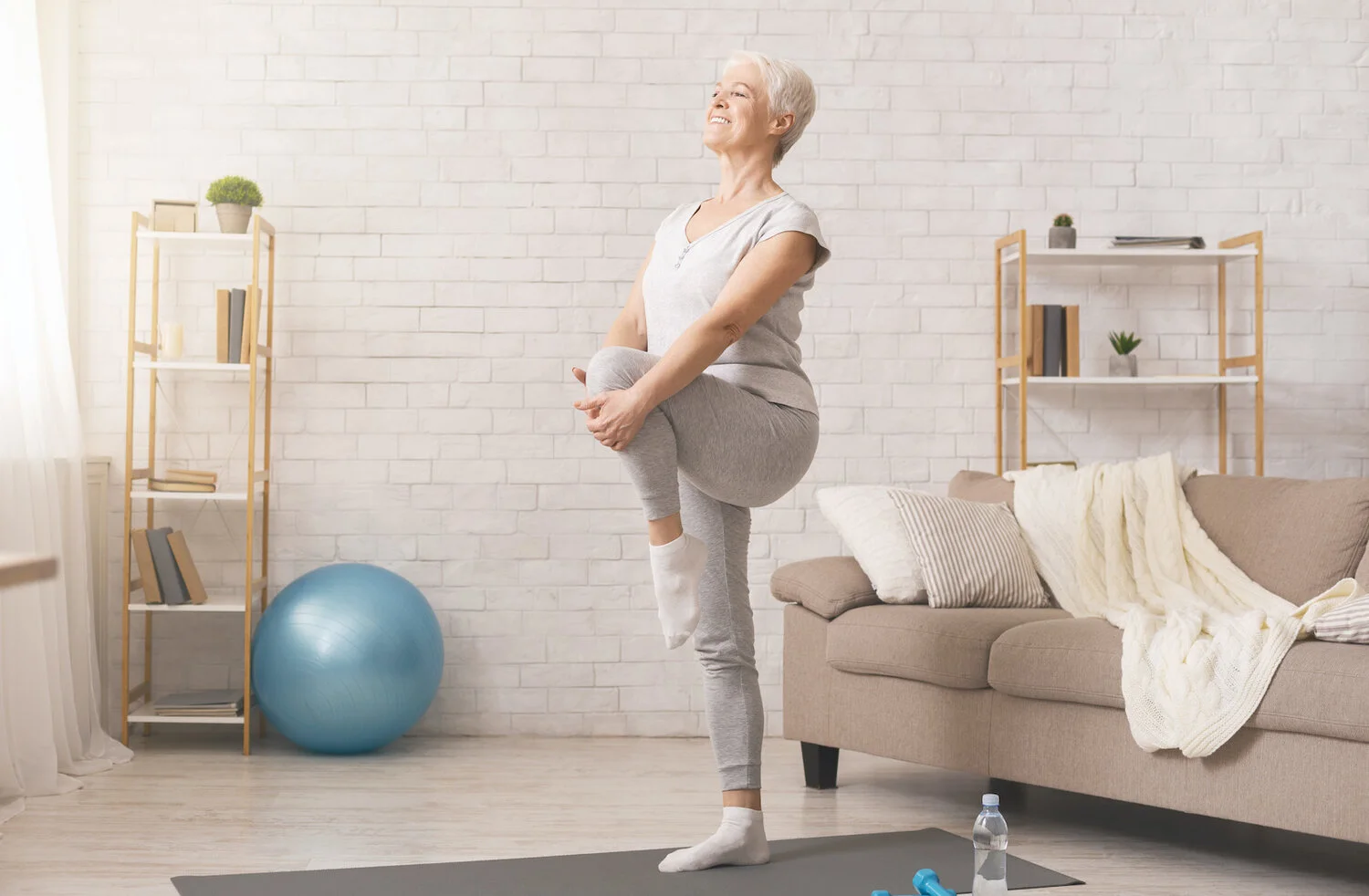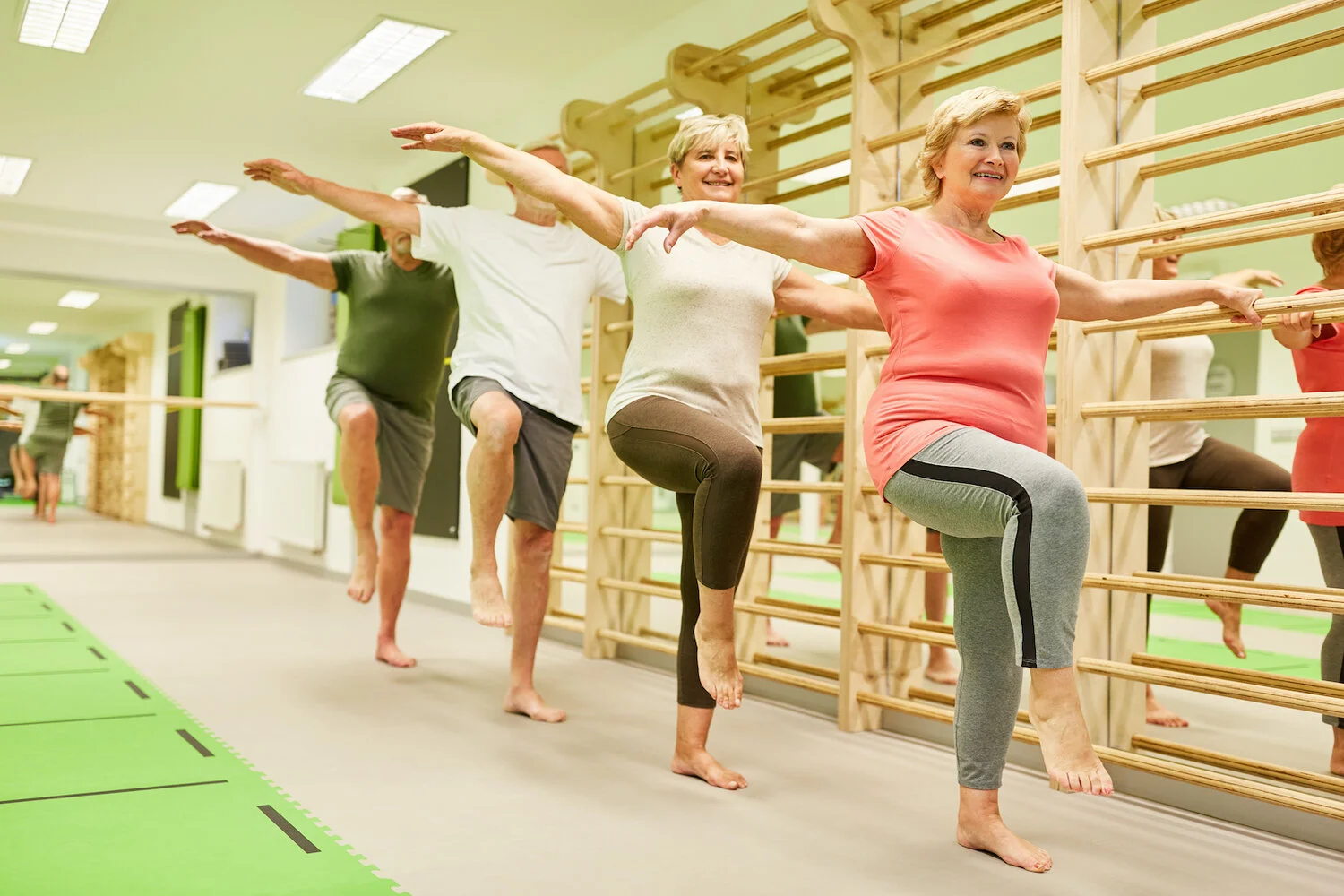
The Best Elderly Foot Exercises + Benefits
In this article from humanhealthmag, we would like to introduce some elderly foot exercises. All seniors know that regular exercise is very important for them. As we said in the article chair ab exercises for seniors, staying active and moving can be the key to a happy and healthy life for them. If you’re not already following a regular exercise program, it’s not too late to start! Leg strengthening is very important for the elderly, and leg strengthening exercises should be included in their exercise program. Did you know that falls are one of the leading causes of injury among the elderly? Injuries caused by falling can be severe and even fatal. That is why living in a customized environment will be very beneficial for them.
If you’re worried about slipping and falling, knowing how effective a regular exercise program can be in maintaining balance and strength will help. With more balance and strength, you’ll feel more confident when walking and moving around. Without strong legs, you can’t even do everyday activities like sitting and getting up from a chair, walking around the neighborhood and following your grandchildren easily. Check with your doctor before starting any new activity to make sure exercise is safe.
How Elderly Foot Exercises Affect Their Health
In general, elderly foot exercises have many benefits for the elderly. If the range of motion of the hip joints is limited due to lack of proper flexibility, the person may not be able to move in certain directions. As a reminder, it is better to do these stretches in the morning or in the evening. Sit-ups are often the main strengthening exercise for leg muscles in the elderly, but they have limitations.
In these types of exercises, you will feel the work on the thigh and quadriceps muscles. Cycling is good for the heart and muscles, and it also improves balance when walking and climbing stairs. If the hip joints have a limited range of motion due to improper flexibility, the person cannot move in certain directions.

Causes of Leg Muscle Weakness in Elderly
Before introducing elderly foot exercises, we want to know why the foot muscles of the elderly become weak? Weakening of the leg muscles in the elderly has many reasons. The following are some common reasons:
- Peripheral artery disease: Peripheral artery disease weakens the blood circulation in the legs and prevents sufficient blood flow in it. Leg numbness, discoloration, muscle cramps and tingling are some of the symptoms of this disease. Also, the lower limbs and feet become colder than before. If left untreated, the leg muscles will quickly weaken. Leg muscle weakness is more likely for people with this disease.
- Nutrient deficiency: In case of lack of calcium, vitamin D, magnesium, iron and other essential micronutrients, leg muscles become weaker. Getting the right nutrients is very important for building muscle and bone tissue. Leg muscles can be strengthened with exercise, but nutritional problems must also be solved.
- Alzheimer’s and Parkinson’s: Alzheimer’s and Parkinson’s affect walking and stepping. The balance of the body is also disturbed. Each of these diseases weakens the muscles of the legs after a while and increases the possibility of a person falling down. With increasing age, the probability of contracting these diseases will increase. A sedentary lifestyle among the elderly worsens the situation, as more muscle is lost as physical activity decreases.
- Diabetes: The damage caused by diabetes, which is usually diagnosed in the elderly, is more than an increase in blood sugar. Diabetes can cause severe leg pain, swelling and muscle cramps by reducing blood circulation in the legs. In some cases, diabetes can lead to neuropathy and destroy any feeling in the feet. In this way, over time, the leg muscles will weaken.
These are some of the common problems that lead to weak leg muscles in the elderly. In addition to these, cardiovascular diseases and the reduction of hormones also have an effect on the weakening of the leg muscles. If you have any of the above diseases, you should do leg exercises in addition to taking the medicines needed to improve leg muscle strength.

5 Elderly Foot Exercises
In this section, we introduce some elderly foot exercises. These exercises are as follows:
1- ABC exercise and ankle circuit training
Slow and gentle ankle movements are a great way to warm up your leg muscles and are especially great at the beginning of any workout. Maintaining proper ankle range of motion is important and can be very easy and even fun if you make it a routine to do exercises that are helpful for this purpose. ABC exercises or doing ankle circles are great because you can do them sitting or lying down. They can also be combined with a standing balance exercise so that the other foot is firmly on the ground while exercising the ankle.
If you do this exercise standing, it is highly recommended to have a support such as a fence or a wall. Ankle exercises can be done at any time of the day, even when you’re sitting on the couch watching TV! To do this exercise, slowly move your ankle to represent the letters of the English alphabet with your toes. If you don’t want to move your feet in the direction of the letters of the alphabet, try to make circular movements only. For best results, do clockwise and counterclockwise movements.
2- Leg Raises
The leg raise exercise is very beneficial for the muscles of the legs, back, hips, buttocks and thighs. All these areas are engaged with just one simple exercise! Increasing the strength of these areas of the body is important for improving balance. This exercise can also be done lying down or standing. Here we explain how to do this exercise in a standing position because it is most likely more feasible for many seniors.
Behind a chair, stand sideways and after holding the back of the chair for balance, raise the leg farthest from the chair to the side. When lifting the leg, keep it straight from the hip joint to the heel. Stay in this position for five counts and then slowly lower your leg. For better results, engage your leg muscles as you lower instead of releasing them and lower your leg in a controlled manner. Repeat the same for the other leg. Do ten moves each time.

3- Squat
This exercise is a modified version of the squat and a great strengthening exercise! Grab the back of the chair and lower yourself into a semi-squat position. To do this, bend your knees while keeping your back straight. Do not bend to the point where it hurts. This exercise should challenge your body, but not be painful. Lift yourself up and stand up. Repeat this exercise ten times.
4- Leg extension
This exercise is one of the types of leg extensions that can be done while standing. Place your feet firmly on the floor and use the back of the chair for support. With knees straight, lift one leg behind you and then bring it back. Do the same for the other leg. Another type of this exercise is the use of small weights. If you want to use weights, start with a two-pound weight and if you can, increase to a five-pound weight.
5- Standing on the heel
Use a chair for support for this exercise as well. Standing on your heels is a great exercise for strengthening your calves. You can stand up straight with your feet firmly planted on the floor and, using the seat in front of you for support, gently raise your toes and stand on your heels. Commit to incorporating one, two, or all five leg strengthening exercises for seniors into your daily routine.
The difference these exercises make goes beyond the physical benefits. You will also feel more confident and comfortable after seeing the results. Our treatment programs at Dr. Eshghi Clinic are designed to maintain your health and happiness. Our centers are busy providing medical services for the health of clients every day. Contact us today for more information.
Concluding Remarks
In this article, we introduced some elderly foot exercises and explained how to do them. Softening and exercise to strengthen leg muscles in the elderly play an important role in motor health and prevention of early disability and accidents such as falls. By doing the above exercises, you can prevent many muscle pains.

FAQs
What Is the Cause Of Inability To Walk In the Elderly?
- Acute onset of gait disturbance may indicate a cerebrovascular lesion or other acute lesions in the nervous system.
- Systemic diseases that simultaneously affect various organs and tissues of the body are to blame in this regard.
- Adverse effects of medications, including sedatives, also affect the ability to walk.
- Hip and knee arthritis are common non-neurological causes of walking disorders.
How To strengthen Back Muscles In the Elderly
The waist is one of the most vital parts of the body. Since the spine is the starting point of all movement, damage to this area of the body can be very problematic for the elderly. Many small muscles work together to form the delicate movements needed for balance and to keep the spine and back safe. In order for the elderly to be able to manage their daily affairs independently, they should follow the exercises to strengthen the muscles in the elderly, especially in the back area.
